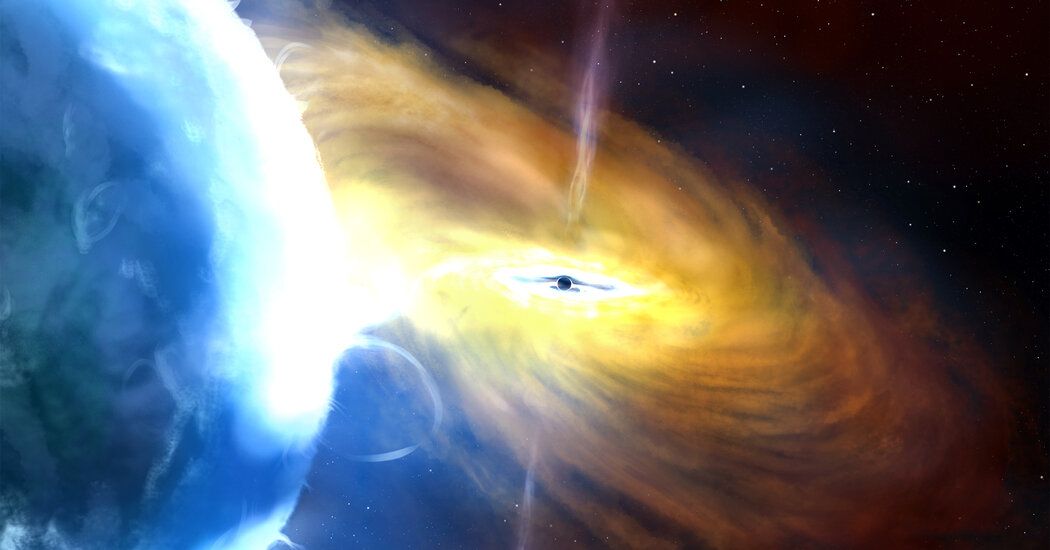The Biggest Explosion in the Cosmos Just Keeps Going
It’s a dog-eat-dog cosmos. Not two weeks ago, on May 3, astronomers reported observing a star that was in the process of swallowing one of its own planets. Just two days earlier, another team had described black holes that were ripping stars apart and consuming them in a process known as tidal disruption event, or T.D.E.
Now an international group of astronomers reports that it is observing one of the most violent and energetic acts of cosmic cannibalism ever witnessed, perhaps the biggest explosion seen yet in the history of the universe. Eight billion light-years from Earth, in the darkness beyond the constellation Vulpecula, a black hole perhaps a billion times as massive as the sun seems to be gorging on a humongous cloud of gas. A study of the phenomenon appeared Friday in Monthly Notices of the Royal Astronomical Society.
The study began on April 13, 2021, when the Zwicky Transient Facility, a small telescope that was busy looking for exploding stars, or supernovas, spotted a bright flash that did not fit expectations. Most supernovas fade after a few weeks; this one, known as AT2021lwx, kept going — and has continued to explode for three years now.
In fact, the explosion turned out to have been first detected a year earlier by the Asteroid Terrestrial-impact Last Alert System, or ATLAS, a network of robotic telescopes in Hawaii, South Africa and Chile. That was the actual start of the cataclysm; as it proceeded, a worldwide network of telescopes and satellites has monitored it, measuring its emanations across the electromagnetic spectrum, from high-energy X-rays down to the infrared.
Source: The New York Times


